预约演示
更新于:2025-12-09

Hologic, Inc.
更新于:2025-12-09
概览
标签
泌尿生殖系统疾病
感染
小分子化药
关联
1
项与 Hologic, Inc. 相关的药物靶点 |
作用机制 DNA调节剂 |
原研机构 |
非在研适应症- |
最高研发阶段批准上市 |
首次获批国家/地区 中国 |
首次获批日期1994-01-01 |
94
项与 Hologic, Inc. 相关的临床试验NCT07088419
Tinidazole for Mycoplasma Genitalium-Urethritis in the Public Health - Seattle & King County Sexual Health Clinic
The objective is to estimate the efficacy of tinidazole for the treatment of Mycoplasma genitalium (MG) among male patients who have been diagnosed with non-gonococcal urethritis (NGU) at the Public Health - Seattle &King County (PHSKC) Sexual Health Clinic (SHC). Tinidazole was approved by the Food and Drug Administration (FDA) in May 2004 to treat other infections (i.e., trichomoniasis, giardiasis, amebiasis, bacterial vaginosis) but has not been systematically tested for effectiveness against M. genitalium. The dosing that the investigators are proposing does not significantly increase the risk associated with taking tinidazole and this investigation meets criteria for an IND exemption.
开始日期2025-07-23 |
申办/合作机构 |
NCT06610539
A Prospective Open Label Study of Patient Reported Outcome Measures and Efficacy Following the Use of 1ml Magtrace® for Sentinel Lymph Node Biopsy in Breast Cancer Patients Undergoing Lumpectomy
The purpose of this study is to provide prospective evidence in the US population of the frequency of skin discoloration and Sentinel Lymph Node detection rate in patients who have recevied Magtrace for Sentinel Lymph Node Biopsy (SLNB) and to evaluate the impact that skin discoloration has on patients when it does occur using patient reported outcome measures.
开始日期2025-04-22 |
申办/合作机构  Endomagnetics Ltd. Endomagnetics Ltd. [+1] |
NCT06636539
Prospective Case Collection Study of Contrast-Enhanced Mammography Imaging Acquired on a New Investigational Device
This is a prospective, multi-center image case collection study to acquire de-identified contrast-enhanced breast images on a mammography device to support continuing software technology development. Eligible subjects include women at least 35 years old with a suspicious finding or breast abnormality on a screening or diagnostic mammogram who are indicated for a diagnostic exam or a biopsy procedure.
开始日期2024-10-14 |
申办/合作机构 |
100 项与 Hologic, Inc. 相关的临床结果
登录后查看更多信息
0 项与 Hologic, Inc. 相关的专利(医药)
登录后查看更多信息
253
项与 Hologic, Inc. 相关的文献(医药)2025-11-19·AMERICAN JOURNAL OF CLINICAL PATHOLOGY
Impact of the Genius Digital Diagnostics System on workflow and accuracy compared with the ThinPrep Imaging System for review of ThinPrep Papanicolaou tests
Article
作者: Nguyen, Chinh ; Sefcik, Kari ; Murphy, Kathleen M ; Chenault, Carrie ; Johnson, Kasey ; Lemeshev, Yan ; Weatherhead, Kristina ; Harrington, Sarah
Abstract:
Objective:
In this study, we compared the workflow of the Genius Digital Diagnostics System (Hologic, Inc) with our current workflow based on the ThinPrep Imaging System (Hologic, Inc) to assess potential efficiencies associated with digitalization of Papanicolaou screening.
Methods:
Each step of the current workflow (glass slide movement and slide review) and the experimental workflow were documented. Substantial workflow efficiencies were associated with the reduction of glass slide movement observed with the experimental workflow of the Genius system compared with the ThinPrep system.
Results:
The ThinPrep-based workflow required more than 5 hours of hands-on time at specific synchronized times throughout the day, whereas the hands-on time of the experimental Genius Digital Diagnostics System was just over an hour and allowed glass movement at flexible times. In addition to these workflow efficiencies, the Genius Digital Diagnostics System resulted in much shorter review times (70.1 seconds) than the ThinPrep Imaging system (138.0 seconds) while maintaining similar agreement to the sign-out diagnosis.
Conclusions:
This study demonstrated that implementing a Genius Dx-based workflow may result in substantial efficiency gains, which can mitigate workforce shortages and improve turnaround time without compromising screening accuracy.
2025-10-01·JCO Global Oncology
Barriers and Facilitators to Cancer Clinical Trial Participation: Perspectives of Patients in the ICON-3 Practice-Based Research Network, Nigeria
Article
作者: Ezeanolue, Echezona E. ; Roden, Richard B.S. ; Friebel-Klingner, Tara M. ; Onyeka, Tonia C. ; Wu, Tzyy-Choou ; Olakunde, Babayemi O. ; Chike-Okoli, Adaeze ; Rositch, Anne F. ; Idemili-Aronu, Ngozi ; Levinson, Kimberly ; Itanyi, Ijeoma U.
PURPOSE:
Africa faces a growing burden of cancer yet remains under-represented in global cancer clinical trials. This disparity limits the generation of population-specific evidence needed to improve cancer outcomes. Recruitment and retention in cancer clinical trials are particularly challenging because of various systemic and individual barriers in Nigeria. This study explores patients' perspectives on barriers and facilitators to recruitment and retention in cancer clinical trials.
METHODS:
A convergent parallel mixed-methods design was used, which comprised a cross-sectional survey and a descriptive qualitative approach. Participants were recruited from multiple oncology centers and secondary facilities within Nigeria’s ICON-3 Practice-Based Research Network. Quantitative data were collected through interviewer-administered questionnaires, whereas qualitative data were gathered via semistructured interviews and analyzed thematically.
RESULTS:
A total of 317 patients participated in the quantitative survey, 18 of whom participated in interviews. Barriers included limited understanding of clinical trials, logistical challenges such as transportation and visit frequency, distrust in researchers and the health care system, and lack of family support. Facilitators included effective communication, incentives, flexible research visits, and culturally tailored interventions.
CONCLUSION:
To optimize cancer clinical trial participation in low-resource settings, interventions must be tailored to local contexts, addressing structural and cultural barriers. Enhanced communication, community involvement, and supportive policies can significantly improve trial participation and outcomes.
2025-09-09·AMERICAN JOURNAL OF CLINICAL PATHOLOGY
Papanicolaou test interpretation utilizing the Hologic Genius Digital Diagnostics System vs manual glass slide review: A retrospective study of 596 cases
Article
作者: Lewis, Gloria ; Kirschling, Sarah ; Underwood, Dawn L ; Brainard, Jennifer A ; Oshilaja, Olaronke ; Ooms, Kaitlyn ; Johnson, Kasey ; Harrington, Sarah ; Policarpio-Nicolas, Maria Luisa C ; Booth, Christine N ; Doxtader, Erika E
Abstract:
Objective:
Advances in digital pathology and artificial intelligence have the potential to enhance cytopathology practice. The objective of this study was to compare the performance of the Hologic Genius Digital Diagnostics System with manual glass slide review for Papanicolaou test interpretation.
Methods:
Three cytologists retrospectively reviewed 596 Papanicolaou tests using both the Genius Digital Diagnostics System and manual review, with a 4-week washout period between reviews. The study set consisted of 299 Papanicolaou tests originally interpreted as negative for intraepithelial lesion or malignancy and 297 tests originally interpreted as atypical squamous cells of undetermined significance or above (ASC-US+). Cases interpreted as ASC-US+, reactive/repair, or endometrial cells in a woman older than 45 years of age were additionally reviewed by 1 of 5 cytopathologists. Concordance was calculated between each method and the original cytologic interpretation (reference standard). Sensitivity and specificity for detection of high-grade disease were determined for each method. Cytologist review time per case was recorded.
Results:
Digital interpretation was concordant with the original interpretation in 578 of 596 (97%) cases, while manual interpretation was concordant with the original interpretation in 577 of 596 (97%) cases. Digital review had higher sensitivity for detection of high-grade disease than manual review did (100% vs 86%) but was less specific (93% vs 98%). The average digital review time per case was statistically significantly shorter than manual review time (194.5 seconds vs 485.0 seconds, P < .001).
Conclusions:
Papanicolaou test interpretation using the Genius Digital Diagnostics System is noninferior to manual review. Digital review had higher sensitivity for detection of high-grade disease and statistically significantly reduced screening time.
426
项与 Hologic, Inc. 相关的新闻(医药)2025-12-04
·动脉网
유한주 有限州기자 记者구독 订阅구독중 订阅中이전 以前다음 下一个HLB·JW중외·광동 대표 인사 잇따라 HLB、JW中外、广东代表人事接连变动3040 임원 약진·신사업 부서 설립도 주목 3040高管晋升和新业务部门的设立也备受关注。이미지 확대 放大图像송도 바이오클러스터 松岛生物集群[인천경제자유구역청 제공. 재판매 및 DB 금지] [由仁川经济自由区厅提供。禁止转售及数据库使用](서울=연합뉴스) 유한주 기자 = 국내 주요 제약·바이오 기업이 연말 인사에서 수장 교체와 신사업 부서 설립에 주력하는 분위기다. (首尔=联合新闻)记者柳韩珠 = 国内主要制药和生物企业在今年年底的人事安排中,主要集中于更换领导层和设立新业务部门。리더십 재편으로 신약 개발 등 미래성장동력을 강화하고 새 먹거리를 찾아 수익 기반을 넓히려는 취지로 보인다. 通过领导层的重组,似乎旨在强化新药开发等未来增长动力,并寻找新的收益来源以扩大盈利基础。5일 업계에 따르면 HLB그룹 진양곤 회장은 이번 정기 임원 인사에서 대표직 사임을 밝혔다. 신규 대표로는 김홍철 HLB이노베이션[024850] 대표이사가 신규 대표로 내정됐다. 据业界5日消息,HLB集团会长郑洋坤在此次定期高管人事调整中宣布辞去代表职务。新任代表由HLB Innovation[024850]代表理事金弘澈内定接任。HLB[028300]는 '리더십 구조를 재정비해 그룹의 중장기 성장 전략을 탄탄히 하는 데 초점을 맞췄다'고 설명했다. HLB[028300]表示:“通过重整领导结构,专注于巩固集团的中长期增长战略。”업계에서는 HLB 신약 미국 허가가 잇따라 불발된 점이 이번 경영진 교체에 영향을 줬다는 분석이 나온다. 业内分析认为,HLB新药在美国的审批接连失败,对此次管理层更换产生了影响。앞서 2023년 HLB는 표적항암제 '리보세라닙'과 중국 항서제약 면역항암제 '캄렐리주맙' 병용요법에 대해 미국 식품의약품청(FDA)에 간암 1차 치료제로 신약 허가를 신청했지만, 지난해 항서제약이 FDA로부터 보완요청서(CRL)를 받으면서 승인이 불발됐다. 올해 3월 2차 신청에 대해서도 멸균 절차 등을 지적받으며 승인이 재차 무산됐다. 此前,2023年HLB公司为其靶向抗癌药“利博瑟拉尼”与中国恒瑞医药的免疫抗癌药“卡姆瑞利珠单抗”的联合疗法向美国食品药品监督管理局(FDA)申请作为肝癌一线治疗药物的新药批准,但去年恒瑞医药收到FDA的补充要求书(CRL),导致批准失败。今年3月的第二次申请也因被指出无菌程序等问题,再次未能获得批准。회사는 내년 간암 및 담관암 신약 상업화 성공 등을 목표로 하고 있다. 公司目标是明年成功实现肝癌和胆管癌新药的商业化。JW중외제약[001060]은 함은경 JW메디칼 대표이사를 신임 대표이사로 선임했다. 3월 사내이사에 오른 지 약 9개월 만이다. JW中外制药[001060]任命了JW Medical的代表理事韩恩京为新任代表理事。这是自她今年3月成为公司内部董事以来,时隔约9个月。앞으로 회사는 기존 신영섭 대표이사 단독 대표 체제에서 신영섭·함은경 각자대표 체제로 운영된다. 今后,公司将从现有的新英燮代表理事单独代表体制转变为新英燮和咸恩京的各自代表体制运营。함 대표는 1986년 서울대 제약학과를 졸업해 JW홀딩스[096760] JW경영기획실장, JW바이오사이언스 대표이사, JW생명과학[234080] 대표이사 등을 지냈다. 咸代表于1986年毕业于首尔大学制药学系,曾担任JW控股[096760] JW经营企划室长、JW生物科学代表理事、JW生命科学[234080]代表理事等职务。향후 함 대표는 연구개발(R&D) 부문을 담당하고 신 대표는 영업·마케팅에 집중할 것으로 관측된다. 각 분야 전문성 강화에 속도를 내기 위해서다. 预计今后咸代表将负责研发(R&D)部门,而申代表将专注于销售和市场营销。这是为了加快强化各领域的专业性。광동제약[009290]도 각자대표 체제로 경영 효율성을 높인다. 广东制药[009290]也通过各自代表的体制提高经营效率。회사는 박상영 경영총괄 사장을 대표이사로 신규 선임해 최성원 대표이사 회장과 2인 각자대표 체제를 도입했다. 公司新任命朴相英经营总监为首席执行官,与崔成源首席执行官会长共同建立了两人代表体制。최 대표는 전략·신사업·R&D 총괄 최고경영자(CEO)로서, 박 대표는 경영총괄 CEO로서 각자 전문 영역에서 독립적인 의사결정을 내릴 예정이다. 崔代表将作为负责战略、新业务和研发的首席执行官(CEO),朴代表将作为负责整体经营的CEO,两人将在各自的专业领域进行独立决策。이미지 확대 放大图像알약 药丸[게티이미지뱅크 제공] [由Getty Images Bank提供]젊은 리더십을 전진 배치한 사례도 눈에 띈다. 年轻领导层被推到前台的案例也引人注目。삼성바이오로직스[207940]는 2026년 임원인사에서 30대 안소영 상무와 40대 김희정 부사장을 배출했다. 안 상무와 김 부사장 모두 회사 창립 이래 최연소 여성 임원이다. 三星生物[207940]在2026年的高管人事调整中,提拔了30多岁的安昭英常务和40多岁的金熙贞副社长。安常务和金副社长均是公司成立以来最年轻的女性高管。회사는 '민첩한 의사결정 구조 확립과 미래 경쟁력 강화를 위한 성과 기반 인사라는 원칙을 강화한 결과'라고 설명했다. 公司解释称,这是“为了确立敏捷的决策结构并加强未来竞争力,强化了基于绩效的人事原则的结果”。삼성바이오에피스도 1981년생 신지은 부사장, 1987년생 정의한 상무 등 3040 세대를 포함한 승진 인사를 발표했다. 三星生物制药也宣布了晋升人事,包括1981年出生的辛智恩副总裁、1987年出生的郑义翰常务等30至40多岁一代。신동빈 롯데 회장의 장남 신유열(39) 부사장도 롯데바이오로직스 각자 대표를 맡게 됐다. 新东斌乐天会长的长子新有烈(39岁)副总裁也将担任乐天生物制药的共同代表。신사업 발굴을 중점으로 한 조직 개편도 주목받는다. 以发掘新业务为重点的组织改编也备受关注。SK바이오팜[326030]은 방사성의약품(RPT) 본부를 신설하며 뇌전증 신약 '세노바메이트'에 이은 차세대 먹거리 확보를 본격화했다. SK生物制药[326030]设立了放射性药物(RPT)总部,正式启动继脑癫痫新药'塞诺巴美特'之后的下一代增长点的开发。RPT 본부는 원료·동위원소 확보, 파이프라인 발굴 및 전임상 수행, 글로벌 사업개발 등 전주기 운영 기능을 갖췄다. RPT总部具备原料和同位素的获取、管道挖掘及临床前执行、全球业务开发等全周期运营功能。회사는 'RPT 사업을 핵심 성장축으로 육성하겠다는 의지를 명확히 한 것'이라고 했다. 公司明确表示了将RPT业务作为核心增长轴来培育的意愿。SK바이오팜은 지난해 기술 도입한 RPT 후보물질 'SKL35501' 임상시험계획(IND) 제출을 준비하며 방사성의약품 후보물질 추가 도입을 계획하고 있다. SK生物制药公司正准备提交去年引进技术的RPT候选物质“SKL35501”的临床试验计划(IND),并计划引进更多的放射性药物候选物质。hanju@yna.co.kr 韩联社제보는 카카오톡 okjebo 爆料请通过 KakaoTalk 联系 okjebo。<저작권자(c) 연합뉴스, <版权(c) 联合新闻,무단 전재-재배포, AI 학습 및 활용 금지> 禁止未经授权的转载、再分发,以及AI学习和使用。2025/12/05 06:13 송고 2025年12月05日 06:13 发送2025년12월05일 06시13분 송고 2025年12月05日 06时13分 发送#제약 #制药#바이오 #生物댓글 评论좋아요 喜欢슬퍼요 伤心화나요 生气후속요청 后续请求국내 최대 원스톱 国内最大一站式콘텐츠 제공 플랫폼 内容提供平台함께 보면 좋은 콘텐츠 一起观看的好内容by 通过데이블 Dable광고 广告함께 읽기 좋은 콘텐츠 适合一起阅读的内容Taboola 후원링크 Taboola 赞助链接광고 广告광고 广告광고 广告연합 마이뉴스 联合MyNews다양한 주제별 맞춤 各种主题定制추천 뉴스를 제공합니다. 提供推荐新闻。북마크 书签공유 共享공유하기 分享카카오톡 KakaoTalk페이스북 FacebookX X페이스북 메신저 Facebook Messenger네이버 밴드 Naver BandURL 복사 复制URL닫기 关闭URL이 복사되었습니다. URL已复制。댓글 评论글자크기 字体大小본문 글자 크기 조정 正文文字大小调整폰트 1단계 13px 字体 第1阶段 13px폰트 2단계 16px 字体 2级 16px폰트 3단계 18px 字体 3级 18px폰트 4단계 20px 字体 4级 20px폰트 5단계 22px 字体 5级 22px닫기 关闭프린트 打印제보 举报
2025-12-02
MARLBOROUGH, Mass.--(BUSINESS WIRE)--Hologic, Inc. (Nasdaq: HOLX) and its subsidiary, Biotheranostics, Inc., today announced that 11 studies featuring the Breast Cancer Index® (BCI™) Test will be presented at the 2025 San Antonio Breast Cancer Symposium® (SABCS). Findings from these studies support the company’s ongoing commitment to help inform personalized treatment recommendations for patients with early-stage, hormone receptor-positive (HR+) breast cancer. Building on the test’s established position as the only guideline-recognized and most extensively validated test to predict which patients are likely to benefit from extended endocrine therapy,1-7 these new insights explore potential expanded utility in premenopausal women and comparison to the 21-gene assay for extended endocrine therapy treatment decisions.
New Data to be Presented at the 2025 SABCS Demonstrates Potential Expanded Utility of the Breast Cancer Index Test, the Leading Biomarker in Personalizing Endocrine Therapy Duration
“These data reinforce Hologic’s continued commitment to oncology innovation and advancing precision diagnostics in breast cancer care,” said Jennifer Schneiders, Ph.D., President of Diagnostic Solutions at Hologic. “This impressive volume of evidence provides deeper insight into premenopausal patient populations, supports more nuanced endocrine therapy decision-making and highlights the consistency of the BCI Test’s performance across diverse patient subgroups and sample types.”
Among the new findings to be presented, one study, “Identifying Premenopausal Patients with Early-Stage Hormone Receptor-Positive Node-Negative Breast Cancer at Minimal Risk of Distant Recurrence by Breast Cancer Index [#PS3-07-27],” explores the BCI Test’s potential ability to identify a group of premenopausal patients with early-stage, HR+ breast cancer who are at minimal risk of experiencing metastatic recurrence. Results from this translational analysis of the two largest landmark ovarian function suppression (OFS) trials, Suppression of Ovarian Function Trial (SOFT) and Tamoxifen and Exemestane Trial (TEXT), support the potential utility of BCI Testing in identifying premenopausal women who may forgo the addition of OFS therapy to primary adjuvant endocrine therapy.8^*
“As we observe an increasing number of women being diagnosed with breast cancer at a younger age, it is imperative to balance the need for effective recurrence prevention with the preservation of patient quality of life,” said primary study author Dr. Ruth O’Regan, MD. “The ability to accurately identify premenopausal women who can safely avoid more aggressive treatment regimens would represent a significant advancement in the field of personalized medicine, allowing us to tailor therapies to individual patient needs while minimizing unnecessary side effects.”
A full list of studies to be presented at the 2025 SABCS conference includes:
Poster Session 2: December 10, 2025, 5:00pm – 6:30pm CST Endocrine Sensitivity and Predicted Benefit of Extended Endocrine Therapy Based on Breast Cancer Index (BCI) in BRCA1, BRCA2 and CHEK2 Pathogenic Variant Carriers with ER+/HER2– Breast Cancer [#PS2-08-25]: Examines how BCI Testing may help identify differences in hormone-therapy benefit among women with inherited BRCA1, BRCA2 or CHEK2 gene variants. 9 *
Endocrine Sensitivity and Predicted Benefit of Extended Endocrine Therapy Based on Breast Cancer Index (BCI) in BRCA1, BRCA2 and CHEK2 Pathogenic Variant Carriers with ER+/HER2– Breast Cancer [#PS2-08-25]: Examines how BCI Testing may help identify differences in hormone-therapy benefit among women with inherited BRCA1, BRCA2 or CHEK2 gene variants. 9 *
Poster Session 3: December 11, 2025, 12:30pm – 2pm CST Breast Cancer Index Re-stratifies 21-Gene Assay Risk Groups for Risk of Recurrence and Extended Endocrine Therapy Benefit: Final Analysis of the BCI Registry Study [#PS3-07-24]: Demonstrates that BCI Testing provides added insight for doctors already using other genomic tests to guide treatment planning and emphasizes the need to use the right test for each clinical decision. 10 * Identifying Premenopausal Patients with Early-Stage Hormone Receptor-Positive Node-Negative Breast Cancer at Minimal Risk of Distant Recurrence by Breast Cancer Index [#PS3-07-27]: Highlights the BCI Test’s ability to identify premenopausal patients with early-stage, HR+ breast cancer who are at minimal risk of experiencing metastatic recurrence. 8 ^* Prognostic Performance of Breast Cancer Index in Patients with Early-Stage HR+ HER2+ Breast Cancer Treated with Adjuvant Trastuzumab: NCCTG N9831 (Alliance) [#PS3-07-28]: Supports the BCI Test’s ability to assess recurrence risk in patients with HER2+ disease. 11 * Comparative Analysis of Breast Cancer Index Testing in Hispanic and Non-Hispanic Populations [#PS3-08-07]: Evaluates ethnicity-based differences in BCI Results and treatment patterns. 12 * Comparison of Breast Cancer Index Scores from Core-Needle Biopsies Versus Surgical Excisions in Early-Stage Breast Cancer [#PS3-08-26]: Demonstrates that BCI Testing delivers consistent results from both biopsies and surgical tissue samples. 13 *
Breast Cancer Index Re-stratifies 21-Gene Assay Risk Groups for Risk of Recurrence and Extended Endocrine Therapy Benefit: Final Analysis of the BCI Registry Study [#PS3-07-24]: Demonstrates that BCI Testing provides added insight for doctors already using other genomic tests to guide treatment planning and emphasizes the need to use the right test for each clinical decision. 10 *
Identifying Premenopausal Patients with Early-Stage Hormone Receptor-Positive Node-Negative Breast Cancer at Minimal Risk of Distant Recurrence by Breast Cancer Index [#PS3-07-27]: Highlights the BCI Test’s ability to identify premenopausal patients with early-stage, HR+ breast cancer who are at minimal risk of experiencing metastatic recurrence. 8 ^*
Prognostic Performance of Breast Cancer Index in Patients with Early-Stage HR+ HER2+ Breast Cancer Treated with Adjuvant Trastuzumab: NCCTG N9831 (Alliance) [#PS3-07-28]: Supports the BCI Test’s ability to assess recurrence risk in patients with HER2+ disease. 11 *
Comparative Analysis of Breast Cancer Index Testing in Hispanic and Non-Hispanic Populations [#PS3-08-07]: Evaluates ethnicity-based differences in BCI Results and treatment patterns. 12 *
Comparison of Breast Cancer Index Scores from Core-Needle Biopsies Versus Surgical Excisions in Early-Stage Breast Cancer [#PS3-08-26]: Demonstrates that BCI Testing delivers consistent results from both biopsies and surgical tissue samples. 13 *
Five additional studies featuring data on the clinical utility of the BCI Test will be presented by external investigators at 2025 SABCS, including:
Poster Session 3: December 11, 2025, 12:30pm – 2pm CST Guidelines for Breast Cancer Index Test before and after Epic software enhancement [#PS3-03-18] 14 Higher Breast Tumor Grades Could More Likely Benefit from Extended Adjuvant Endocrine Therapy [#PS3-09-10] 15 Correlation Between Breast Cancer Index (BCI) and RSClin Late in Assessing 5-10 Year Recurrence Risk in Early-Stage Hormone Receptor-Positive Breast Cancer [#PS3-09-19] 16 Retrospective study on breast cancer index testing in a community hospital and analyzing its impact on physician-decision making for extended endocrine therapy in early breast cancer [#PS3-10-23] 17
Guidelines for Breast Cancer Index Test before and after Epic software enhancement [#PS3-03-18] 14
Higher Breast Tumor Grades Could More Likely Benefit from Extended Adjuvant Endocrine Therapy [#PS3-09-10] 15
Correlation Between Breast Cancer Index (BCI) and RSClin Late in Assessing 5-10 Year Recurrence Risk in Early-Stage Hormone Receptor-Positive Breast Cancer [#PS3-09-19] 16
Retrospective study on breast cancer index testing in a community hospital and analyzing its impact on physician-decision making for extended endocrine therapy in early breast cancer [#PS3-10-23] 17
Poster Session 4: December 11, 2025, 5:00pm – 6:30pm CST Spatial transcriptomics of TNBCs show an association between HOXB13 expression and formation of a plasmablast-rich neighborhood [#PS4-07-08] 18
Spatial transcriptomics of TNBCs show an association between HOXB13 expression and formation of a plasmablast-rich neighborhood [#PS4-07-08] 18
“The research to be presented at 2025 SABCS continues to offer insight into expanded clinical applications of the BCI Test,” said Schneiders. “With more than a decade of clinical use by over 9,000 providers, and its proven ability to influence extended endocrine therapy decisions, it’s encouraging to see additional real-world and independent data reinforcing the BCI Test’s impact. These findings underscore our ongoing commitment to help clinicians deliver more personalized, confident care for patients.”
About the Breast Cancer Index Test
The Breast Cancer Index Test is a molecular, gene expression-based test uniquely positioned to provide information to help physicians individualize treatment decisions for patients with early-stage, HR+ breast cancer. This breakthrough test helps oncology care teams and patients navigate the difficult trade-offs between taking steps to prevent recurrence of their disease and facing significant side effects and safety challenges related to unnecessary treatment.
The Breast Cancer Index Test has guideline designation from the American Joint Committee on Cancer for cancer staging based on molecular profile. The ASCO® Clinical Practice Guideline and the NCCN Clinical Practice Guidelines in Oncology (NCCN Guidelines®) acknowledge the Breast Cancer Index Test as a biomarker to help inform extended endocrine treatment decisions.6,7 It is the only test recognized by guidelines to predict which early-stage, HR+ breast cancer patients are likely to benefit from extended endocrine therapy.6,7
The Breast Cancer Index Test is intended for routine clinical use, and physician treatment decisions based on results are the responsibility of the physician. It is a sole-source laboratory-developed test (LDT) performed by Biotheranostics, Inc., a CLIA-certified and CAP-accredited diagnostic laboratory. It has not been cleared or approved by the U.S. Food and Drug Administration. For more information, visit www.breastcancerindex.com.
About Hologic, Inc.
Hologic, Inc. is a global leader in women’s health dedicated to developing innovative medical technologies that effectively detect, diagnose and treat health conditions and raise the standard of care around the world. To learn more, visit www.hologic.com and connect with us on LinkedIn, Facebook, X, Instagram and YouTube.
Forward-Looking Statements
This news release may contain forward-looking information that involves risks and uncertainties, including statements about the use of Hologic’s and its subsidiaries’ products. There can be no assurance these products will achieve the benefits described herein or that such benefits will be replicated in any particular manner with respect to an individual patient, as the actual effect of the use of the products can only be determined on a case-by-case basis. In addition, there can be no assurance that these products will be commercially successful or achieve any expected level of sales. Hologic expressly disclaims any obligation or undertaking to release publicly any updates or revisions to any such statements presented herein to reflect any change in expectations or any change in events, conditions or circumstances on which any such data or statements are based.
^Note: Incorporation of refined risk estimates in the results reported by the Breast Cancer Index test are pending appropriate regulatory approvals. For the Breast Cancer Index Intended Uses and Limitations, please visit breastcancerindex.com.
*Biotheranostics, Inc. researchers are named authors in this study.
Hologic, Breast Cancer Index, BCI and associated logos are trademarks and/or registered trademarks of Hologic, Inc. and/or its subsidiaries in the United States and/or other countries. All other trademarks are the property of their respective owners.
References
Zhang Y, et al. Breast Cancer Index identifies early-stage estrogen receptor–positive breast cancer patients at risk for early- and late-distant recurrence. Clin Cancer Res. 2013;19(15):4196-4205. doi:10.1158/1078-0432.CCR-13-0804.
Sgroi DC, et al. Prediction of late disease recurrence and extended adjuvant letrozole benefit by the HOXB13/IL17BR biomarker. JNCI J Natl Cancer Inst . 2013;105(14):1036-1042. doi:10.1093/jnci/djt146.
Bartlett JMS, et al. Breast Cancer Index and prediction of benefit from extended endocrine therapy in breast cancer patients treated in the Adjuvant Tamoxifen–To Offer More? (aTTom) trial. Ann Oncol. 2019;30(11):1776-1783. doi:10.1093/annonc/mdz289.
Noordhoek I, et al. Breast Cancer Index predicts extended endocrine benefit to individualize selection of patients with HR‐positive early-stage breast cancer for 10 years of endocrine therapy. Clin Cancer Res. 2021;27(1):311-319. doi:10.1158/1078-0432.CCR-20-2737.
Mamounas EP, et al. Breast Cancer Index (BCI) and prediction of benefit from extended aromatase inhibitor therapy in HR+ breast cancer: NRG Oncology/NSABP B-42. J Clin Oncol . 2021;39(15_suppl):501. doi:10.1200/JCO.2021.39.15_suppl.501
Referenced with permission from the NCCN Clinical Practice Guidelines in Oncology (NCCN Guidelines ® ) for Breast Cancer V.5.2025. © National Comprehensive Cancer Network, Inc. 2025. All rights reserved. Accessed November 6, 2025. To view the most recent and complete version of the guideline, go online to NCCN.org. NCCN makes no warranties of any kind whatsoever regarding their content, use or application and disclaims any responsibility for their application or use in any way.
Andre F, et al. J Clin Oncol. 2022;40(16):1816-1837. Referenced with permission from the American Society of Clinical Oncology (ASCO): Clinical Practice Guideline Endorsements for Adjuvant Endocrine and Chemotherapy in Early-Stage Breast Cancer. © American Society of Clinical Oncology, 2025. All rights reserved. To view the most recent and complete version of the guideline, go online to https://ascopubs.org/guidelines [ascopubs.org]. ASCO Clinical Practice Guideline makes no warranties of any kind whatsoever regarding their content, use of application and disclaims any responsibility for their application or use in any way.
O’Regan R, et al. Identifying premenopausal patients with early-stage hormone receptor–positive node-negative breast cancer at minimal risk of distant recurrence by Breast Cancer Index. Presented at: San Antonio Breast Cancer Symposium (SABCS); December 11, 2025; San Antonio, TX.
Yadav S, et al. Endocrine sensitivity and predicted benefit of extended endocrine therapy based on Breast Cancer Index (BCI) in BRCA1, BRCA2, and CHEK2 pathogenic variant carriers with ER+/HER2– breast cancer. Presented at: San Antonio Breast Cancer Symposium (SABCS); December 10, 2025; San Antonio, TX.
Chuy V, et al. Breast Cancer Index re-stratifies 21-gene assay risk groups for risk of recurrence and extended endocrine therapy benefit: Final analysis of the BCI Registry Study. Presented at: San Antonio Breast Cancer Symposium (SABCS); December 11, 2025; San Antonio, TX.
Chumsri S, et al. Prognostic performance of Breast Cancer Index in patients with early-stage HR+ HER2+ breast cancer treated with adjuvant trastuzumab: NCCTG N9831 (Alliance). Presented at: San Antonio Breast Cancer Symposium (SABCS); December 11, 2025; San Antonio, TX.
Sandoval-Leon AC, et al. Comparative analysis of Breast Cancer Index testing in Hispanic and non-Hispanic populations. Presented at: San Antonio Breast Cancer Symposium (SABCS); December 11, 2025; San Antonio, TX.
Kapoor NS, et al. Comparison of Breast Cancer Index scores from core-needle biopsies versus surgical excisions in early-stage breast cancer. Presented at: San Antonio Breast Cancer Symposium (SABCS); December 11, 2025; San Antonio, TX.
Tran CC, et al. Guidelines for Breast Cancer Index test before and after Epic software enhancement. Presented at: San Antonio Breast Cancer Symposium (SABCS); December 11, 2025; San Antonio, TX.
Ogunsesan Y, et al. Higher breast tumor grades could more likely benefit from extended adjuvant endocrine therapy . Presented at: San Antonio Breast Cancer Symposium (SABCS); December 11, 2025; San Antonio, TX.
Rupani KV, et al. Correlation between Breast Cancer Index (BCI) and RSClin late in assessing 5–10-year recurrence risk in early-stage hormone receptor–positive breast cancer. Presented at: San Antonio Breast Cancer Symposium (SABCS); December 11, 2025; San Antonio, TX.
Essarani M, et al. Retrospective study on Breast Cancer Index testing in a community hospital and analysis of its impact on physician decision-making for extended endocrine therapy in early breast cancer. Presented at: San Antonio Breast Cancer Symposium (SABCS); December 11, 2025; San Antonio, TX.
Flood B, et al. Spatial transcriptomics of TNBCs show an association between HOXB13 expression and formation of a plasmablast-rich neighborhood . Presented at: San Antonio Breast Cancer Symposium (SABCS); December 11, 2025; San Antonio, TX.
SOURCE: Hologic, Inc.
ASCO会议
2025-12-02
BOSTON, Dec. 2, 2025 /PRNewswire/ -- Clairity, developer of the first image-only AI model authorized by the U.S. Food and Drug Administration (FDA) that estimates a woman's five-year risk of developing breast cancer from a routine mammogram, today announced the formation of a Strategic Advisory Board to support its product path and the broad rollout and adoption of Clairity's predictive AI technologies at scale.
The new Board brings together renowned leaders from diagnostics, digital health, cardiovascular medicine, and life sciences to guide Clairity's next phase of growth—advising on clinical integration, access, and global implementation. Their collective expertise underscores Clairity's mission to shift medicine's center of gravity from detection and treatment to prediction and prevention.
Advisory Board Members
Julia Cheek — Founder and CEO, Everlywell. Ms. Cheek is a pioneer in consumer diagnostics and at-home testing. Julia brings deep expertise in scaling digital health platforms, commercializing new categories, and building patient-trusted brands.
"Women shouldn't have to navigate another complex test to understand their risk. Using the mammogram they already have makes better risk information both accessible and respectful of their time."
Charles Taylor, PhD — Professor of Medicine and Computational Engineering and Sciences, University of Texas at Austin, Founder and Former CTO, HeartFlow. Dr. Taylor led development of one of the first FDA-authorized AI solutions in cardiovascular imaging. His experience advancing HeartFlow through regulatory clearance, reimbursement, and clinical guidelines provides a blueprint for responsible scale in regulated medical AI.
"Responsible AI in medicine means rigorous validation and seamless clinical integration. Clairity's provider-first model embodies how durable technologies earn physician trust and patient benefit."
Stan Lapidus — Founder, Cytyc & Exact Sciences. Inventor and entrepreneur whose technologies have saved hundreds of thousands of lives through earlier detection. His leadership in developing ThinPrep (over two billion performed to date) and Cologuard—two of the fastest-growing diagnostics of all time—brings unmatched commercialization and innovation discipline.
"Transformative screening tools succeed when science meets disciplined rollout. Clairity's focus on evidence-based, risk-adapted screening reflects that discipline."
Calum MacRae, MD, PhD — Cardiologist and Geneticist, Brigham and Women's Hospital / Harvard Medical School, Founder Atman Health and Tanaist. Leader of the One Brave Idea initiative (AHA, Verily, AstraZeneca and Quest Diagnostics) and Principal Investigator for Apple's Health Study. Dr. MacRae's expertise at the intersection of genomics, systems biology, and digital health informs Clairity's extension into predictive care especially in the cardiovascular arena.
"Risk is dynamic. A calibrated score that evolves with each new mammogram allows clinicians to personalize prevention over time. Clairity's approach offers a new framework for predictive health."
Purpose and Vision
Working alongside CEO
Jeff Luber and Founder,
Constance D. Lehman, MD, PhD, the Advisory Board will help Clairity shape product strategy, clinical validation, and commercialization pathways to ensure that risk-adapted screening remains provider-led and rooted in strong evidence through global adoption.
Jeff Luber, CEO, Clairity
"True innovation in medicine demands rigor, transparency, and accountability. Our Advisory Board helps ensure Clairity continues to lead with science and purpose—integrating AI responsibly to improve outcomes for women everywhere."
Constance D. Lehman, MD, PhD, Founder
"Delivering personalized risk from the screening mammograms women already undergo makes screening more effective and prevention more practical—bringing equity, access, and value to every woman's care."
Why It Matters
Breast cancer remains the most common cancer in women. Traditional risk tools often rely on age, family history, or breast density—factors that leave many women misclassified. Clairity's AI uses the mammogram itself to generate a calibrated, individualized five-year risk score.
Across large U.S. and European studies, Clairity's model has demonstrated strong accuracy and calibration across age, race, and breast density, helping providers identify high-risk women—including those under 50—earlier and more precisely.
Clairity is also extending its platform into cardiovascular health, leveraging the same imaging foundation to develop predictive insights for broader women's health and longevity.
About Clairity, Inc.
Clairity is an AI-powered precision health company transforming medical imaging into a predictive tool for early risk assessment. Its flagship product, Clairity Breast, is the first FDA-authorized platform to estimate a woman's five-year breast cancer risk directly from a routine mammogram. By shifting care from detection to prevention, Clairity empowers health systems, radiologists, and women to act earlier, save lives, and lower the overall cost of cancer care.
To learn more about indications for use, visit:
For more information, visit .
SOURCE Clairity
21%
more press release views with
Request a Demo
100 项与 Hologic, Inc. 相关的药物交易
登录后查看更多信息
100 项与 Hologic, Inc. 相关的转化医学
登录后查看更多信息
组织架构
使用我们的机构树数据加速您的研究。
登录
或
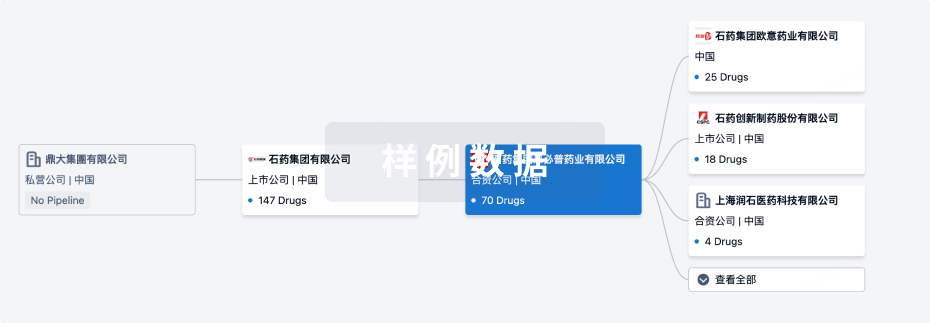
管线布局
2025年12月10日管线快照
管线布局中药物为当前组织机构及其子机构作为药物机构进行统计,早期临床1期并入临床1期,临床1/2期并入临床2期,临床2/3期并入临床3期
临床2期
1
登录后查看更多信息
药物交易
使用我们的药物交易数据加速您的研究。
登录
或
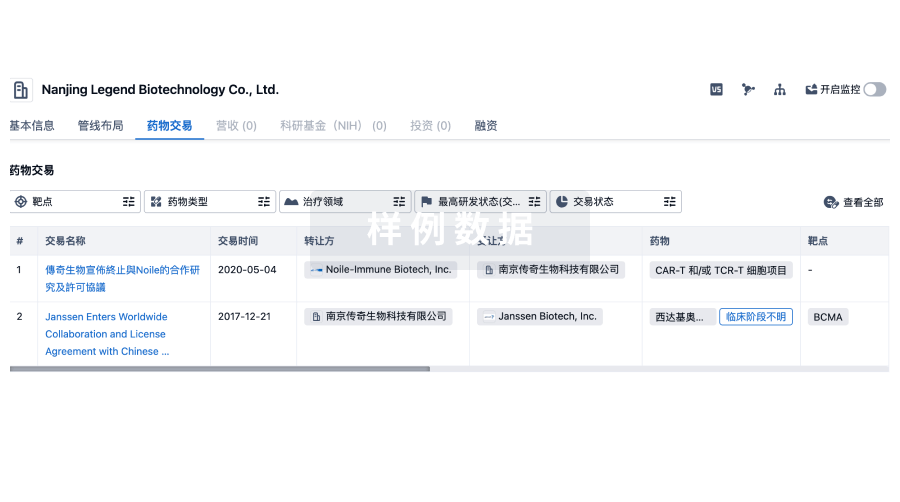
转化医学
使用我们的转化医学数据加速您的研究。
登录
或
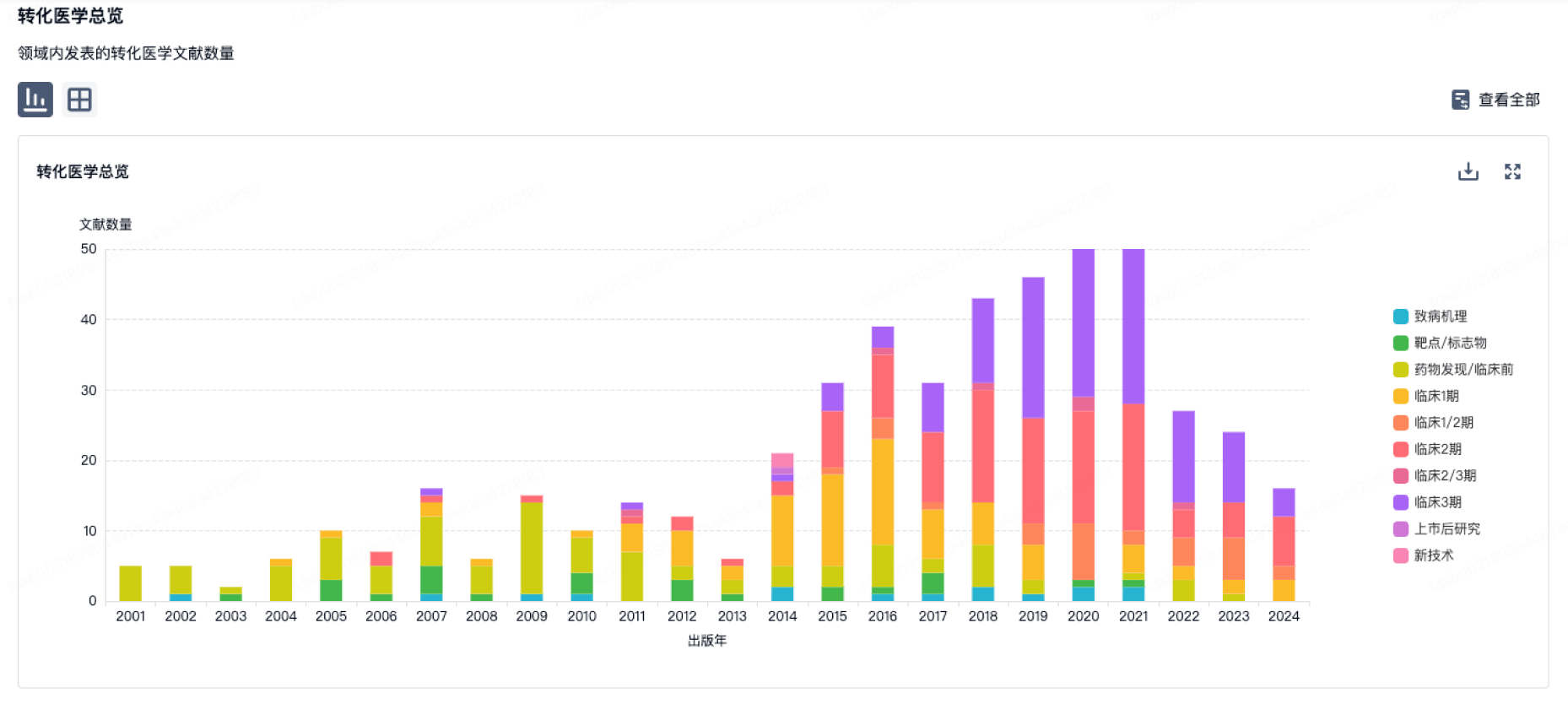
营收
使用 Synapse 探索超过 36 万个组织的财务状况。
登录
或
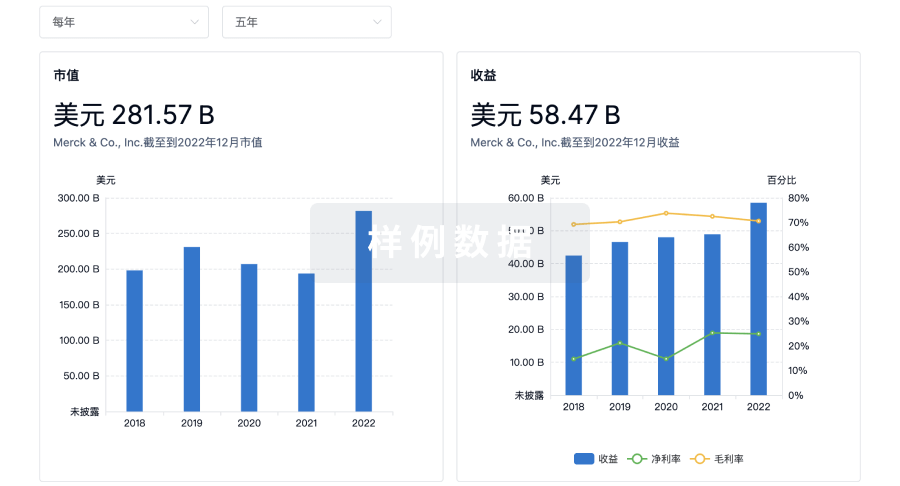
科研基金(NIH)
访问超过 200 万项资助和基金信息,以提升您的研究之旅。
登录
或
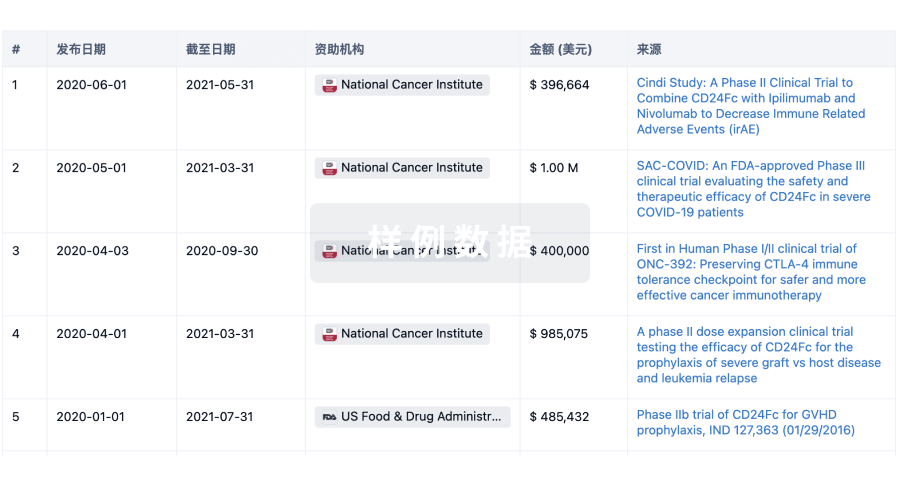
投资
深入了解从初创企业到成熟企业的最新公司投资动态。
登录
或
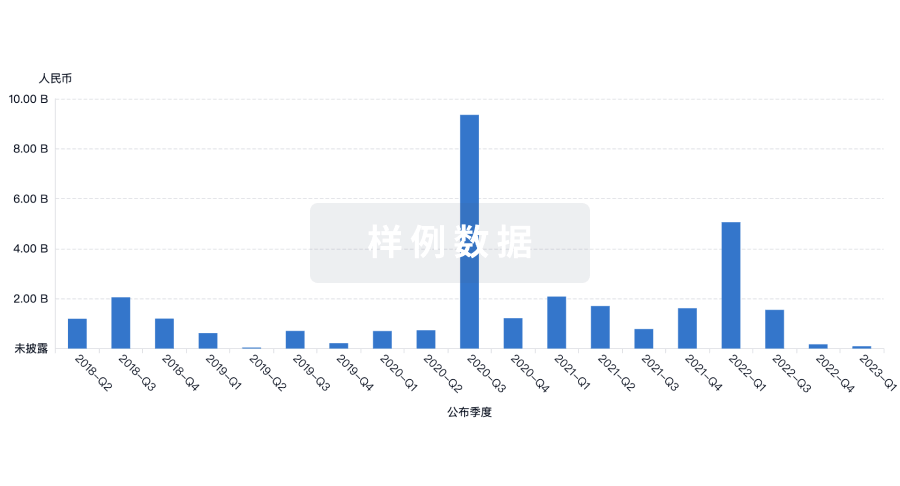
融资
发掘融资趋势以验证和推进您的投资机会。
登录
或
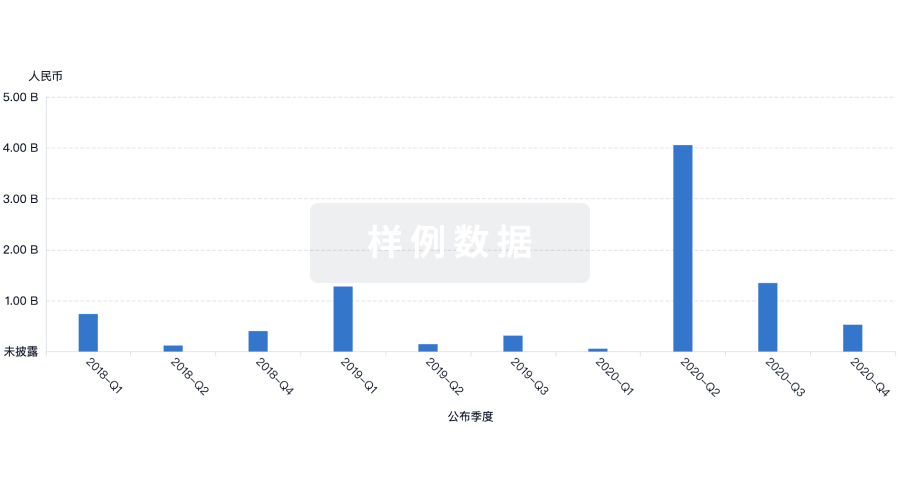
生物医药百科问答
全新生物医药AI Agent 覆盖科研全链路,让突破性发现快人一步
立即开始免费试用!
智慧芽新药情报库是智慧芽专为生命科学人士构建的基于AI的创新药情报平台,助您全方位提升您的研发与决策效率。
立即开始数据试用!
智慧芽新药库数据也通过智慧芽数据服务平台,以API或者数据包形式对外开放,助您更加充分利用智慧芽新药情报信息。
生物序列数据库
生物药研发创新
免费使用
化学结构数据库
小分子化药研发创新
免费使用


